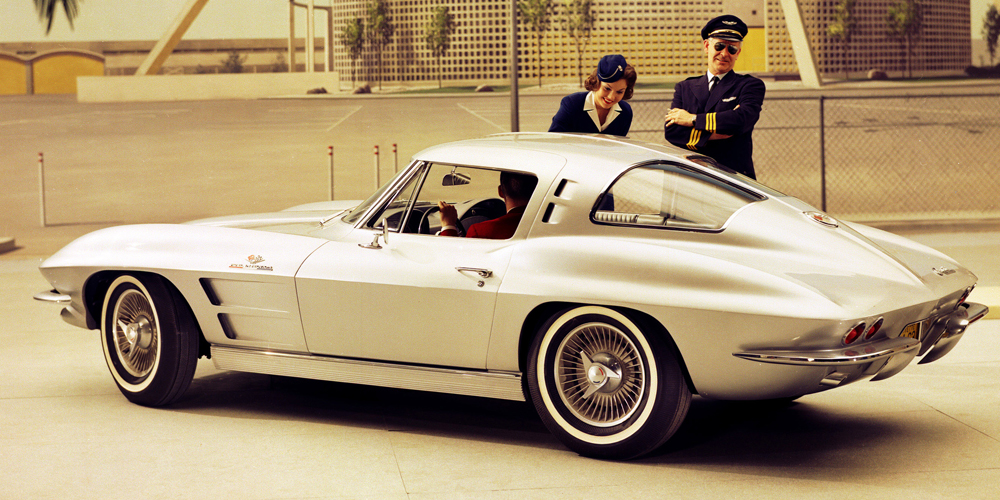
Chevrolet Corvette 1963 through 1967 Second generation Corvette – The Sting Ray’s
1963
1963 Corvette Sting Ray “Split-Window” Coupe, Based on a one-off sports racer penned by design chief Bill Mitchell, the 1963 Corvette Sting Ray “Split-Window” Coupe was possibly the most exhilarating American production car of its time. Beneath its superbly tailored form, the Sting Ray featured a new independent rear suspension and offered potent, fuel-injected small-block V-8 power. New luxury options included air conditioning, leather seat trim, and the latest in infotainment – an AM/FM radio. The “C2” Corvette generation that would continue through 1967, but only the 1963 Coupe would have the famous “split-window” design.
Look for: Grid-patterned simulated air intakes on hood. “Split-window” divided rear glass. Gas filler cover on the rear deck has crossed flags on white background. total restyle based on Bill Mitchell’s 1959 Sting Ray race car.
“What an amazing car,” says Ed of the 1963 Corvette Sting Ray, the model that took the Corvette range to new heights. Based on a show car penned by GM design chief Bill Mitchell, the angular and svelte Sting Ray was more sophisticated and civilized than previous Corvettes, yet in maturing, it didn’t forget that its main purpose in life was to be exhilarating, both in how it looked and how it drove. Distinctive features of the car – which continued to be built out of fiberglass – were the electrically-operated pop-up headlamps and, on the coupe, a split rear window that would go on to become its main motif. “I’ve lectured on this car many times,” says Ed. “Everything was new; in fact it was so new, they had to give it a new name, Sting Ray. Every Corvette since then has been influenced by it, even the current models. The dual cockpit interior is still part of the Corvette and the Chevrolet interior design today.”
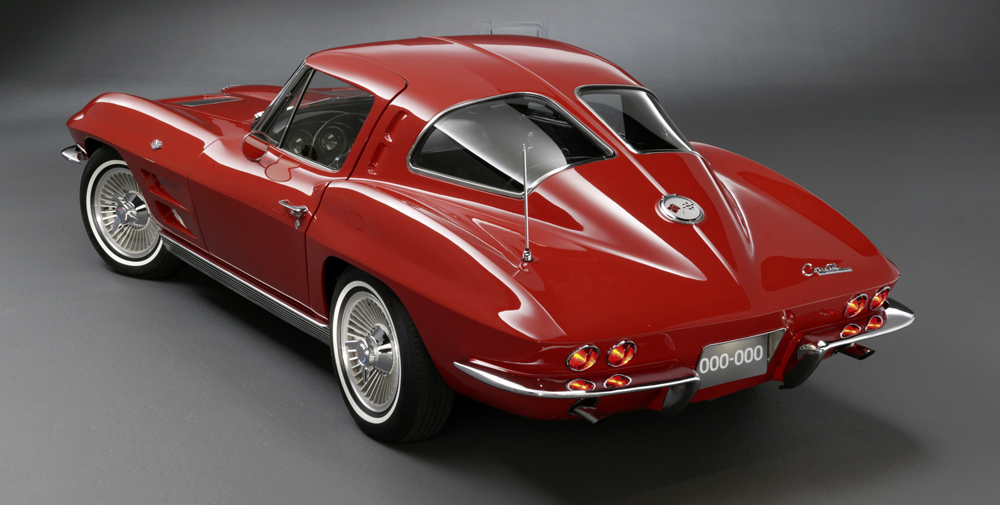
The American sports car departs from the European tradition with a total restyle based on Bill Mitchell’s 1959 Stingray race car. The new car has many firsts: Concealed, rollover headlamps; arched fenders; a streamlined appearance; two Corvette body styles, coupe and convertible; a full-independent rear suspension; and lightweight aluminum wheels. It is the only year for the split-window coupe.
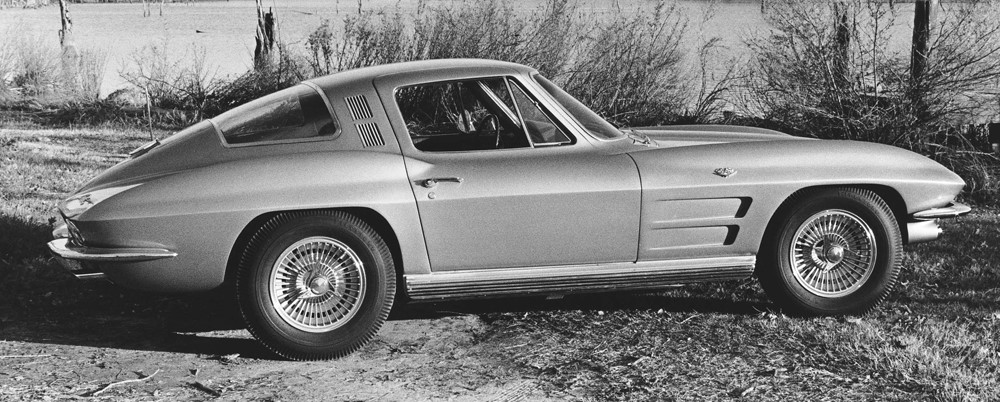
1964
The split-window design of was eliminated on the Coupe because it “intruded into the driver’s rearward vision.” Styling is similar to the 1963 model but the divided rear window and hood trim panels are eliminated.
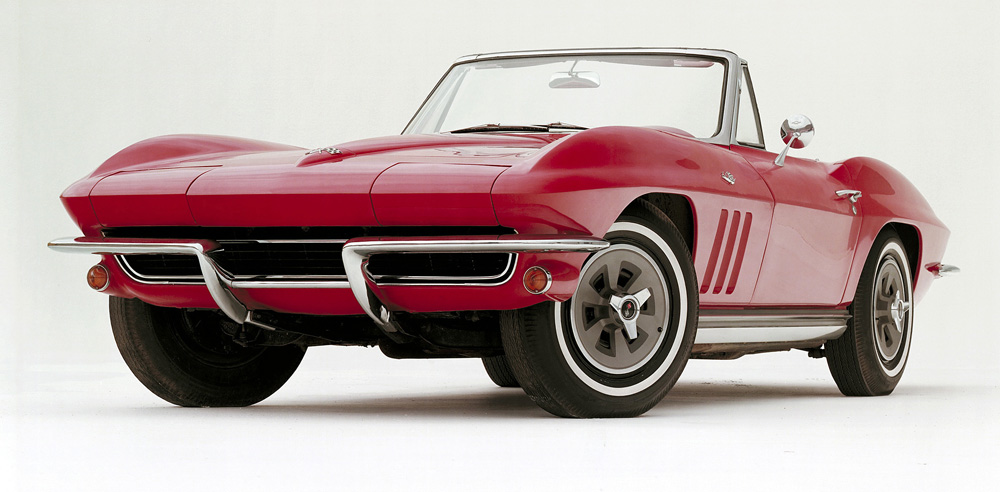
1965
Corvette’s first year for four-wheel disc brakes and the last year for conventional fuel injection. This is the first year for 4-wheel disc brakes, and the last for conventional fuel injection. A powerful 396 cubic-inch “big block” V8 with 425 hp is introduced mid-year, bringing with it a special hood.
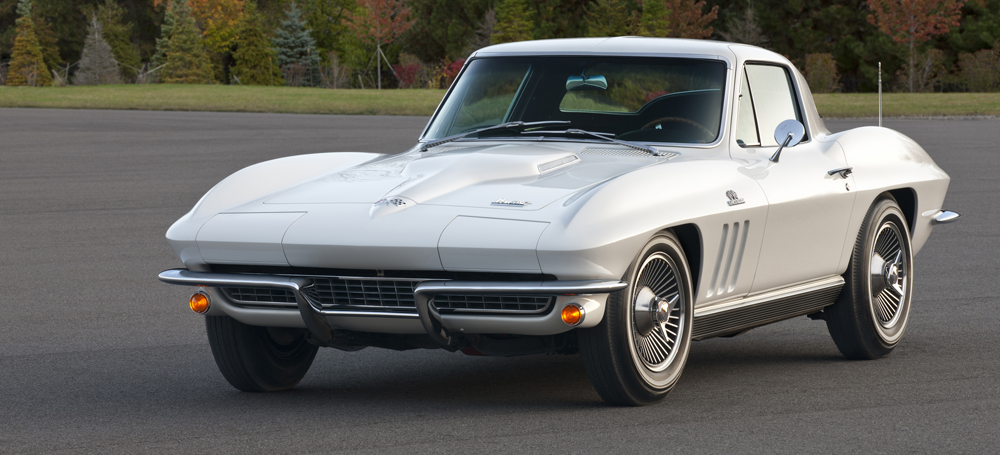
1966
Factory-installed driver/passenger headrests debut as Corvette optional equipment. The optional 425-hp “big block” V8 is enlarged to 427 cubic inches. Factory driver/ passenger headrests make their debut as optional equipment.
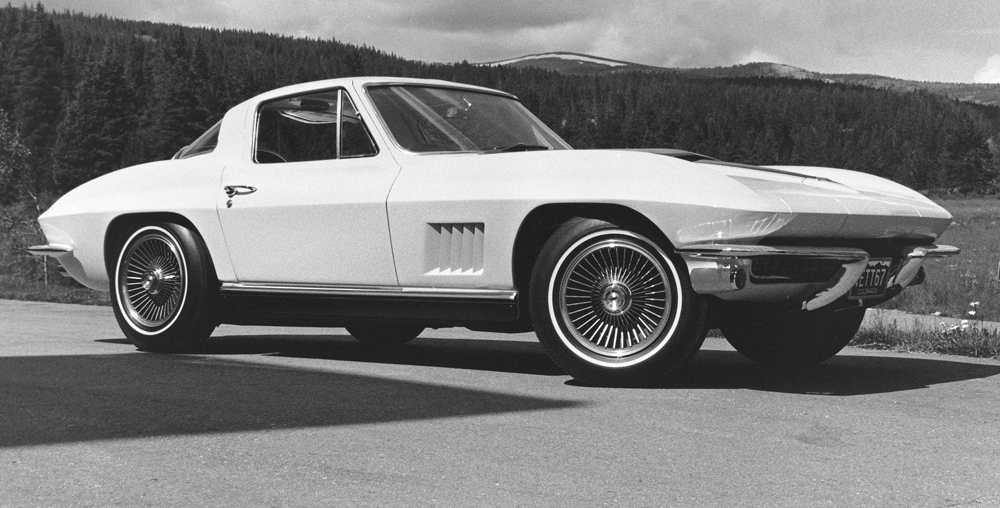
1967
Standard features of the Sting Ray included an energy-absorbing steering column, four-way hazard warning flashers and a dual master cylinder brake system. A significant amount of trim is removed or restyled, and the fender vents are redesigned. Interior changes include new seats and the relocation of the parking brake from under the instrument panel to between the seats. Standard safety features of the ’67 Sting Ray include an energy-absorbing steering column, four-way hazard warning flashers, and a dual master cylinder brake system.
Gallery
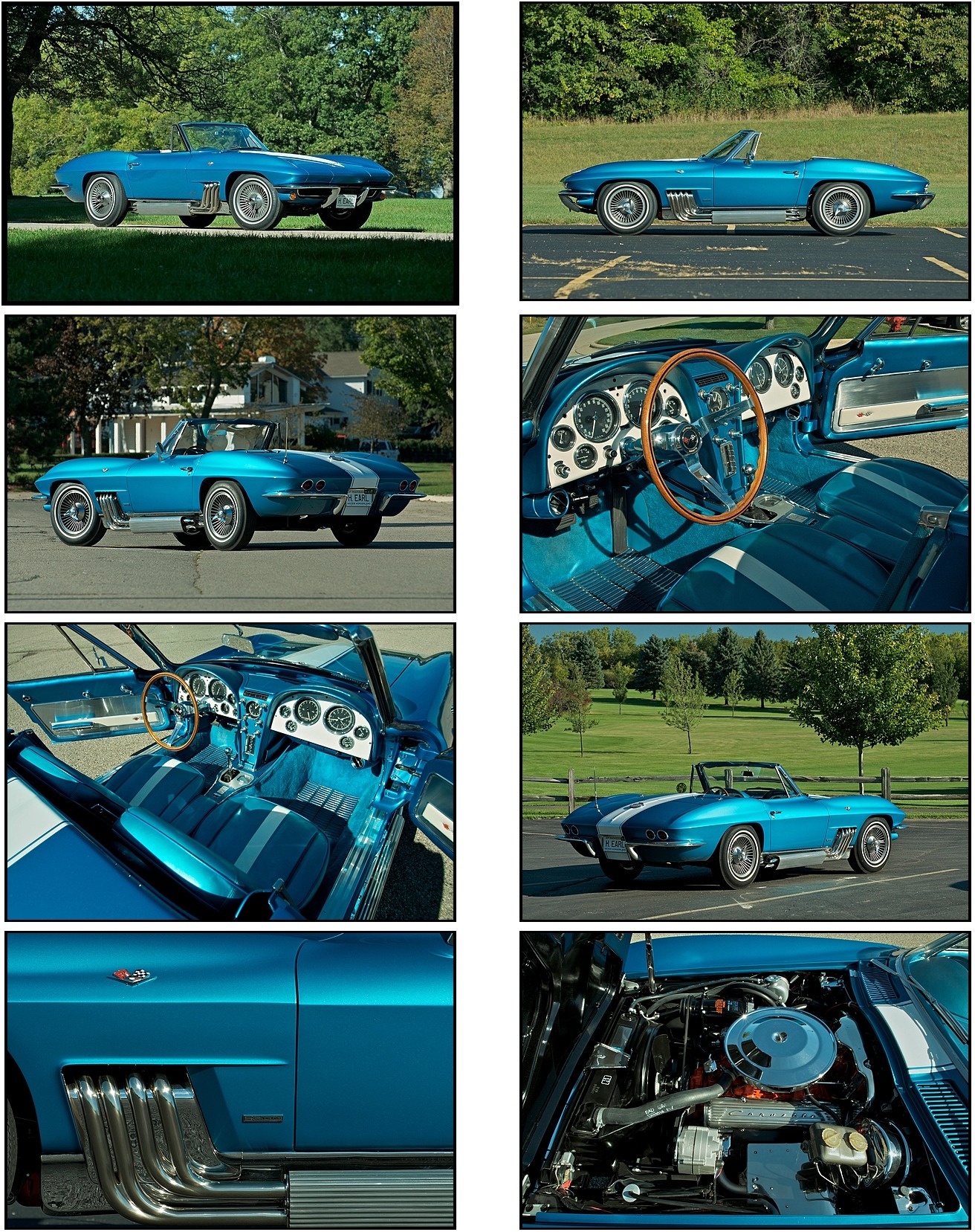
Harley J. Earl’s 1963 Corvette
This 1963 Corvette Convertible is a one-of-a-kind build given directly from General Motors to the man often credited for introducing design and color to the American automobile industry. Harley J. Earl joined GM in 1928 and became head of the General Motors Design team, retiring in 1958. His designs in the ‘50s at the Motorama tours are what brought the Corvette to the attention of the American public and to the world.
Gifted to Earl for his lifetime of contributions to General Motors, he kept the Metallic Blue car at his home in Palm Beach, Florida, for use as his personal driver. He enjoyed the Corvette for two years, even using it as the parade car at the Daytona 500 in 1965 when he served as Grand Marshall. The trophy given to the winner of the Daytona 500 remains his namesake to this day, dubbed “The Harley J. Earl Trophy.”
One of only four Corvettes ever built with the custom side exhaust system, the car features a custom gauge and dash treatment unique to S.O.10323. The 1963 General Motors styling car, Shop Order 10323, is known as the Harley Earl Car.
- – (Shop Order) S.O. 10323
- – 327/300 HP engine
- – Knock-off wheels
- – 4-speed manual transmission
- – Air conditioning
- – Metallic blue, custom Blue leather seats with white trim
- – Stainless steel door and foot well inserts with plush carpeting
- – Unique one-of-a-kind instrumentation (1965-67 flat design)
- – Special unique gauges including altimeter, accelerometer, inside/outside temp, and vacuum pressure
- – 1965-style 4-wheel disc brakes and dual circuit power brakes
While the car bears a 1963 serial number, it is fitted with several 1965-vintage components and a number of items that were never Corvette production pieces, such as the strange side-exit exhaust that sprouts from behind the front wheel wells. The interior is modified, with instruments installed in the glovebox panel, metal foot well plates and custom leather seats and door panels. The exhaust intrudes into the area for the battery, which was relocated behind the passenger seat. There is extensive use of cast brass emblems and other details, including the console trim. It is equipped with factory air conditioning and a four-speed manual transmission, and while certainly a 1963 model, its chrome trim, exterior emblems, interior control knobs and four-wheel disc brakes are all 1965 parts, as is the hood.
Another styling car of the same color was built for the Chicago Auto Show. It however, did not receive the gauge and dash treatment of S.O. 10323. In comparison to standard instrumentation, the clock was moved to the glovebox and accompanied by an accelerometer, vacuum pressure gauge, oil temperature gauge and matching inside/outside temperature gauges, while an altimeter replaced the clock in the center of the dash. As for the car’s most distinguishable feature, only four Corvettes were ever built with this custom cove-exiting exhaust system: the original styling Mako Shark, the Harley Earl car, the Bunkie Knudsen car and the Chicago Auto Show car.
The Harley Earl Corvette, a 1963 General Motors styling car. On October 15, 2013 at Mecum Auctions the car took top honors and sold for $1.5 million.
Harley J. Earl was the Vice President of Design for General Motors. He joined GM in 1928 and retired in 1958. Over his 30-year career, Harley Earl became one of the most influential automobile stylists in the world. His best known innovations include the 1927 LaSalle redesign, the Buick Y-Job and LeSabre styling cars, the ground-breaking Motorama dream cars, the iconic big fins of the 1950s, wrap-around windshields, pillarless hardtops and two tone paint.
He is often considered the second most important man in the history of the American automobile, commonly known and accredited as the man who brought design and color to the American Auto Industry. As the father of the Corvette, it was his designs in the ‘50s at the Motorama tours that brought the Corvette to the attention of the American public and the world.

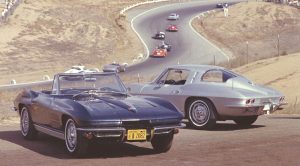
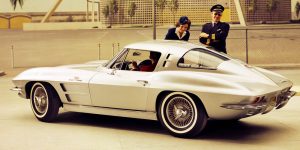
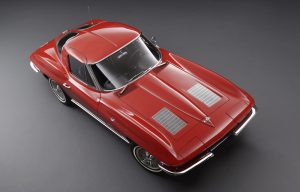
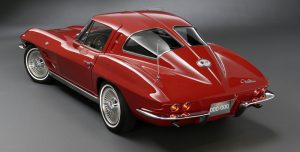

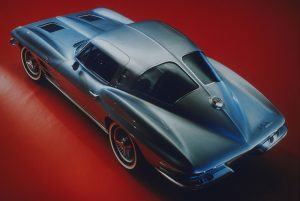
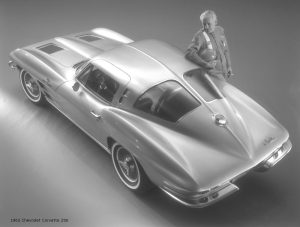
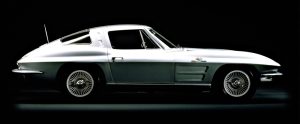

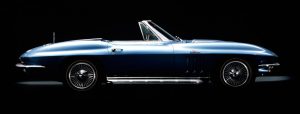
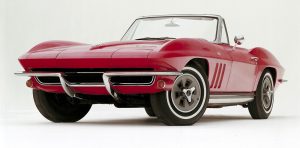
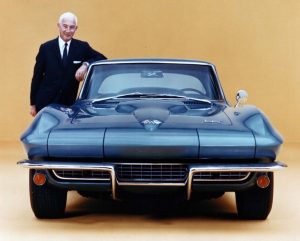
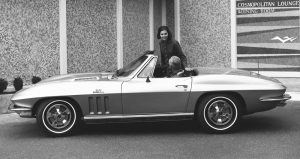

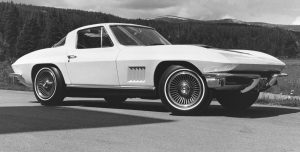

You must be logged in to post a comment.